National park is an area set aside by a nation’s government to protect natural beauty, wildlife, or other remarkable features. National parks also preserve places of cultural, historical, or scientific interest. In addition, some parks protect entire environments, such as coral reefs, deserts, grasslands, mountain ranges, or rain forests. Governments create national parks to protect their natural treasures from the harmful effects of farming, hunting, logging, mining, and other economic development.
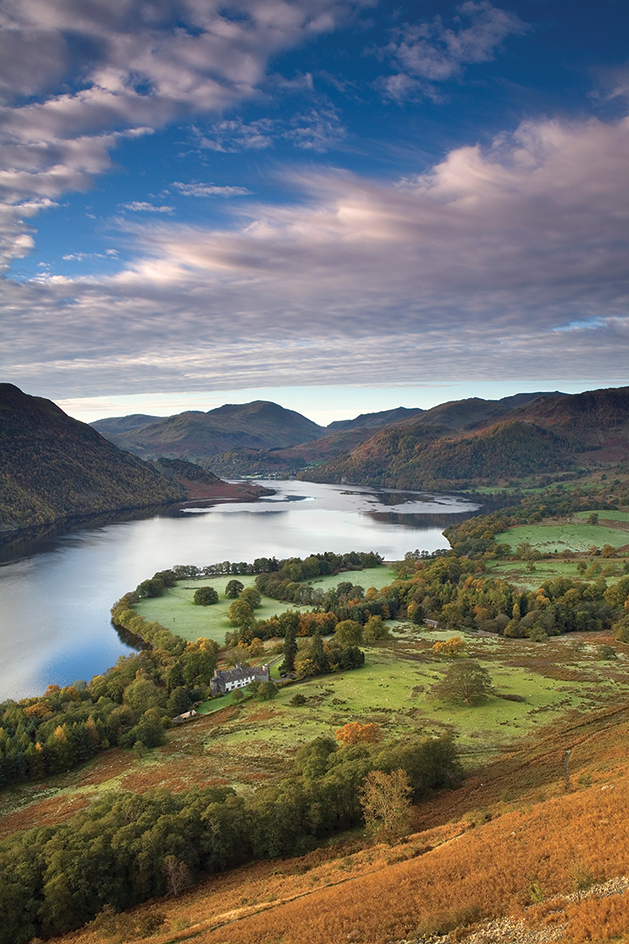
National parks and other protected areas serve important purposes. Many parks allow us to enjoy and appreciate majestic peaks, sparkling lakes, spectacular waterfalls, and other scenic wonders. Others let us see fascinating wild animals in their natural settings. Many national parks foster education by preserving important buildings, battlegrounds, and other features of a nation’s cultural and historical heritage. Still others provide opportunities for boating, camping, hiking, and other forms of recreation. As a means of attracting tourism, national parks are vital to the economies of many nations.
Parks help save endangered animals and plants. They provide natural laboratories for scientists seeking to understand relationships of animals and plants to their environment. Another goal of many parks is to protect the area’s biodiversity (variety of plant and animal species). In this way, parks help maintain a healthy balance among species. They preserve the natural processes that support life on Earth.
National parks face a number of challenges. Many park managers must deal with pressures to develop park resources. They also are concerned about poaching (illegal hunting), the collection of rare plants, pollution, and overcrowding. Other concerns include the rights of the people who were the parks’ original inhabitants and the wise management of natural forces such as fire and wildlife.
The world’s first national park, Yellowstone National Park, was established in the United States in 1872. National parks gradually spread throughout the world. Today, tens of thousands of national parks and other protected areas safeguard vast areas of land throughout the world. Many countries use the term nature reserves for areas similar to national parks. Together, the world’s national parks and nature reserves cover an area about twice the size of Canada, China, or the United States.
Notable national park systems
A number of countries have developed important national park systems. These countries include Argentina, Australia, Canada, Costa Rica, Japan, Kenya, New Zealand, South Africa, and the United States.
Argentina
has dozens of national parks. The country’s first national park, the National Park of the South, was established in 1922 to preserve an area of scenic mountains.
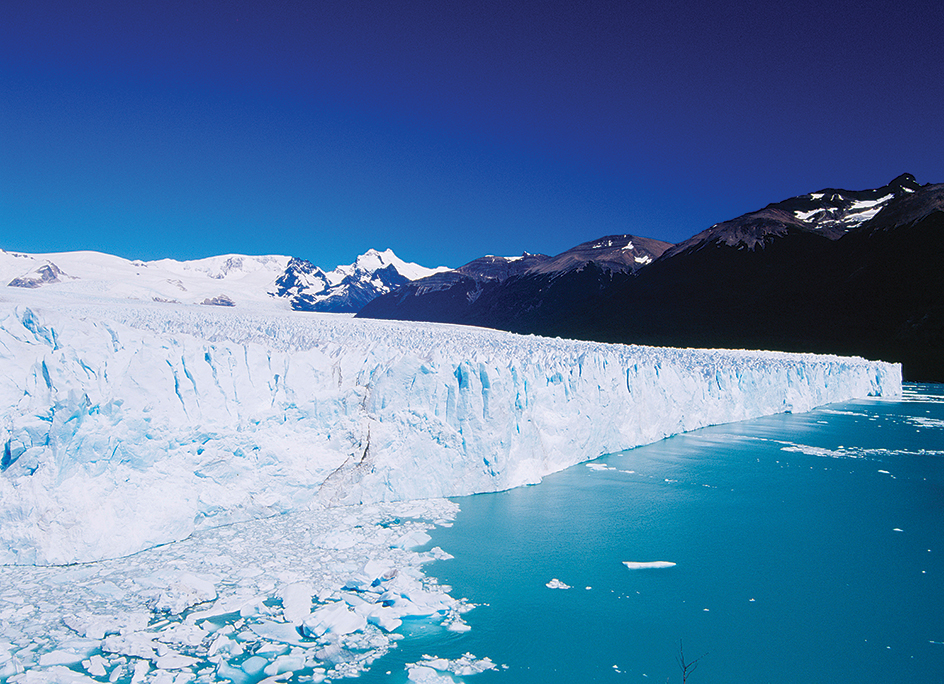
Argentina’s national parks are known for protecting an enormous range of geographical features, plants, and animals. The most notable parks include Nahuel Huapi, Los Glaciares, and Iguazú. Nahuel Huapi was originally called National Park of the South. It is Argentina’s largest national park, covering about 2,700 square miles (7,000 square kilometers). Only slightly smaller is Los Glaciares, which has more than 200 glaciers. Together, Iguazú National Park in Argentina and Iguaçu National Park in Brazil protect the magnificent Iguaçu Falls and about 975 square miles (2,500 square kilometers) of tropical rain forest. This rain forest is home to more than 80 kinds of mammals and about 450 kinds of birds. The waterfall actually consists of 150 to 300 separate falls, depending on water flow. The combined falls measure about 2 miles (3 kilometers) wide and drop 237 feet (72 meters).
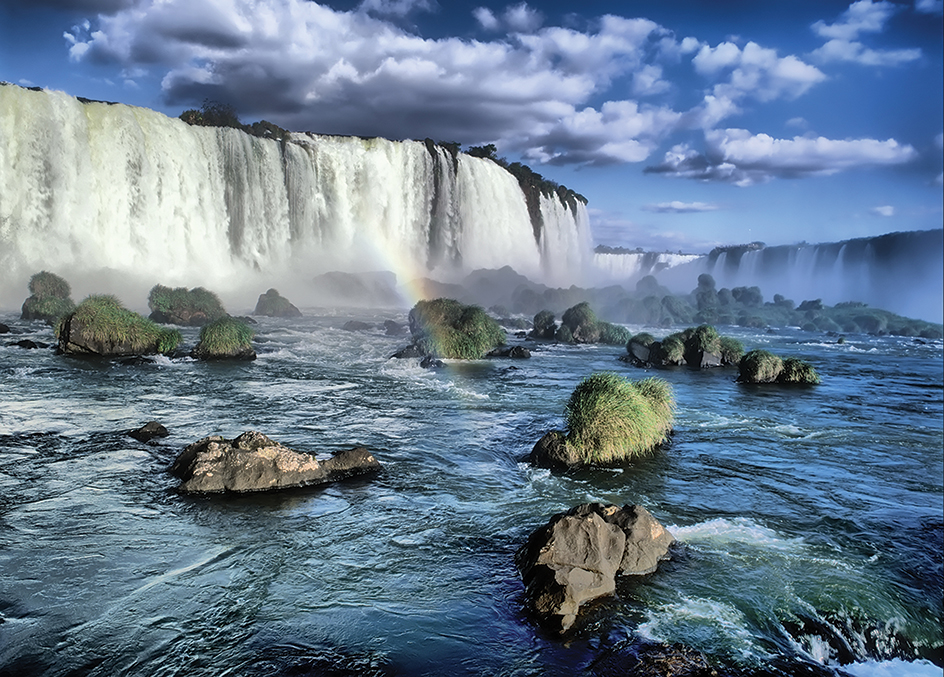
Australia
has hundreds of national parks. Royal National Park was the first to be established, in 1879.
Australia’s natural history makes its parks especially important to scientists. Australia has been isolated from other continents for about 200 million years. As a result, Australia’s wildlife developed differently from the wildlife on other continents. Kangaroos, koalas, wombats, and thousands of other animals are unique to Australia. Many native plants are found nowhere else.
Australia’s Great Barrier Reef Marine Park and Kakadu National Park are of exceptional interest. The Great Barrier Reef, which stretches along Australia’s northeast coast, is the largest system of coral reefs in the world. The Great Barrier Reef Marine Park encompasses most of the reef. At about 133,000 square miles (345,000 square kilometers), it is one of the largest marine reserves in the world. The park is home to hundreds of species of coral and thousands of different species of fish and shellfish.

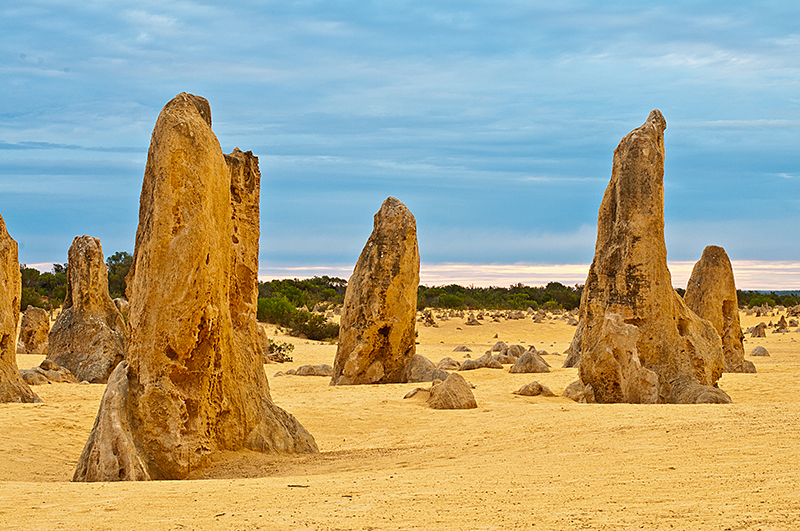
Kakadu National Park preserves Aboriginal culture and history, as well as a beautiful landscape. Archaeological evidence suggests people may have lived in the area for about 65,000 years. The park includes one of the world’s greatest collections of prehistoric cave paintings. Aboriginal peoples continue to live in the park and are recognized as its traditional owners. These traditional owners have leased their lands to the Australian government and cooperate in the management of the park.
Canada
has dozens of national parks and park reserves. The Canadian system of national parks began in 1885, with land near Banff, Alberta. This area became part of what is now Banff National Park.
Canada has pioneered an ecosystem approach to park planning. An ecosystem consists of all the living and nonliving things in a given area and the relationships among them. An area’s air, climate, soils, plants, and animals are all part of its ecosystem. Under the ecosystem approach, Canada’s park service has divided the country into about 39 “natural regions,” each with a different combination of land, water, plants, and animals. The government’s goal is to have at least one national park in each region.

The Canadian park system is exceptionally diverse. Wood Buffalo National Park, in the Northwest Territories, is larger than Switzerland. It protects a large herd of bison and the nesting sites of whooping cranes. Banff, Jasper, Kootenay, and Yoho national parks protect almost 8,000 square miles (20,700 square kilometers) of mountain ecosystem. These four adjacent Rocky Mountain parks have rugged peaks, active glaciers, glistening lakes, thundering waterfalls, and boiling hot springs. The parks are home to grizzly and black bears, bighorn sheep, deer, elk, moose, mountain goats, and dense forests of evergreen trees.
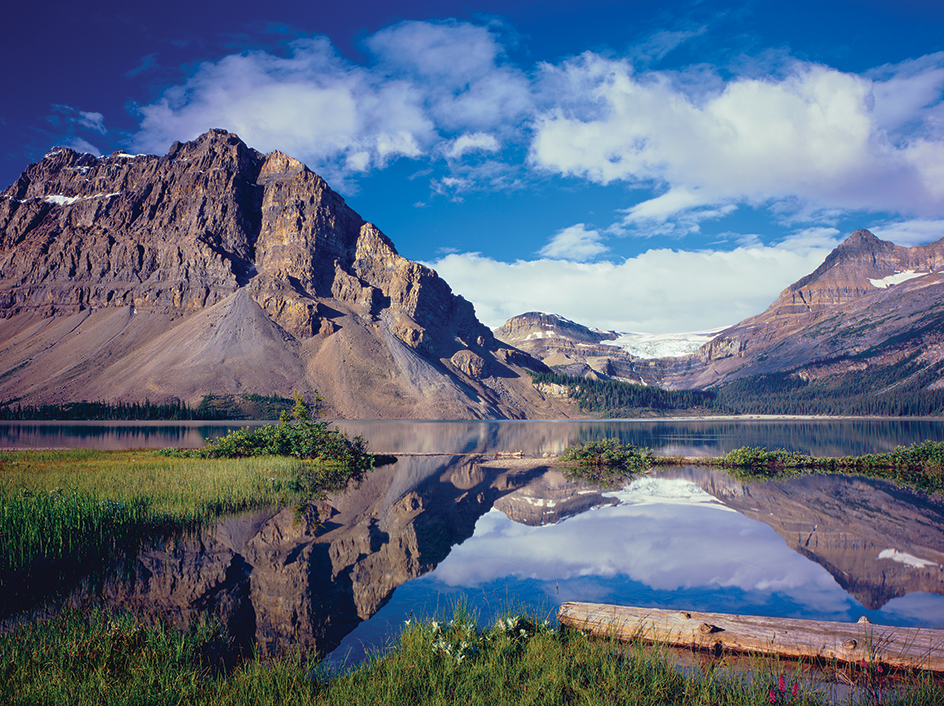
In addition, Canada has begun to develop a system of marine parks to protect underwater environments in the Atlantic, Pacific, and Arctic oceans and in the Great Lakes. Its first national marine park, Fathom Five, was established in 1987 in Lake Huron’s Georgian Bay. The bay’s cold, clear waters preserve several historic shipwrecks and provide opportunities for recreational divers. For a complete listing of Canada’s national parks and historic sites, see Canada (Recreation and sports).
Costa Rica
has many national parks and protected areas. More than 25 percent of Costa Rica’s land area is protected, the most in the world. The national parks protect volcanoes, coral reefs, tropical rain forests, caves, and hot springs. These parks protect more than 75 percent of Costa Rica’s plant and animal species, including more than 850 species of birds. That number is more bird species than live in Canada and the United States combined.
Poás Volcano National Park was created in 1971. It is the nation’s oldest national park. Poás is 8,900 feet (2,700 meters) high, with a crater 950 feet (290 meters) deep. Visitors can walk to the rim and look down into an active volcano. The last major eruptions were in the 1950’s. Braulio Carrillo National Park protects 170 square miles (440 square kilometers) of forests. The elevation of the park ranges from just above sea level to more than 9,500 feet (2,900 meters). An extraordinary diversity of life is found within the park, including more than 600 species of trees and 500 species of birds. Tortuguero National Park protects important sea-turtle nesting areas. Manuel Antonio National Park is popular for its beaches and wildlife. Irazú National Park is a volcano from which visitors can sometimes see both the Caribbean Sea and the Pacific Ocean.
Japan
has dozens of national parks. The national parks of Japan are rooted in both religion and recreation. Japan’s major religions, Buddhism and Shintoism, stress harmony with nature and deep respect for living things. The Japanese people regard forests, islands, mountains, and other places of special beauty as sacred. For centuries, they treated such places as shrines and left them unspoiled. To protect the beauty of Japan’s scenic mountains, the government created the country’s first national park in 1934.
Japan is one of the most densely populated nations in the world. As a result, little unused land is available for the creation of national parks. Japan’s solution has been to establish national parks that include private lands. The government then works with the landowners to preserve the natural beauty of each area. About a fourth of Japan’s parkland is privately owned.
Japan’s best-known scenic treasure is Mount Fuji, a beautiful volcano in Fuji-Hakone-Izu National Park. It attracts about 100 million visitors each year. About 200,000 of them climb to the summit.

Kenya
has dozens of national parks and reserves. Its national park system protects the spectacular variety of wild animals native to East Africa. The national parks of Kenya date to the early 1900’s, when colonial governments set aside wildlife reserves, mainly to provide sightseeing and hunting opportunities for Europeans. Today, money spent by tourists visiting the national parks is a major source of Kenya’s national income.
Kenya’s most famous protected areas include Tsavo and Amboseli national parks. Both lie in the grasslands of East Africa. Tsavo is Kenya’s largest park. It covers about 8,800 square miles (22,800 square kilometers) and is known for its buffaloes, elephants, lions, rhinoceroses, and more than 500 bird species. Amboseli is popular with tourists, who go there to view elephants and Mount Kilimanjaro, Africa’s highest mountain. The mountain’s summit is about 30 miles (50 kilometers) to the south of Amboseli, in Tanzania’s Kilimanjaro National Park.
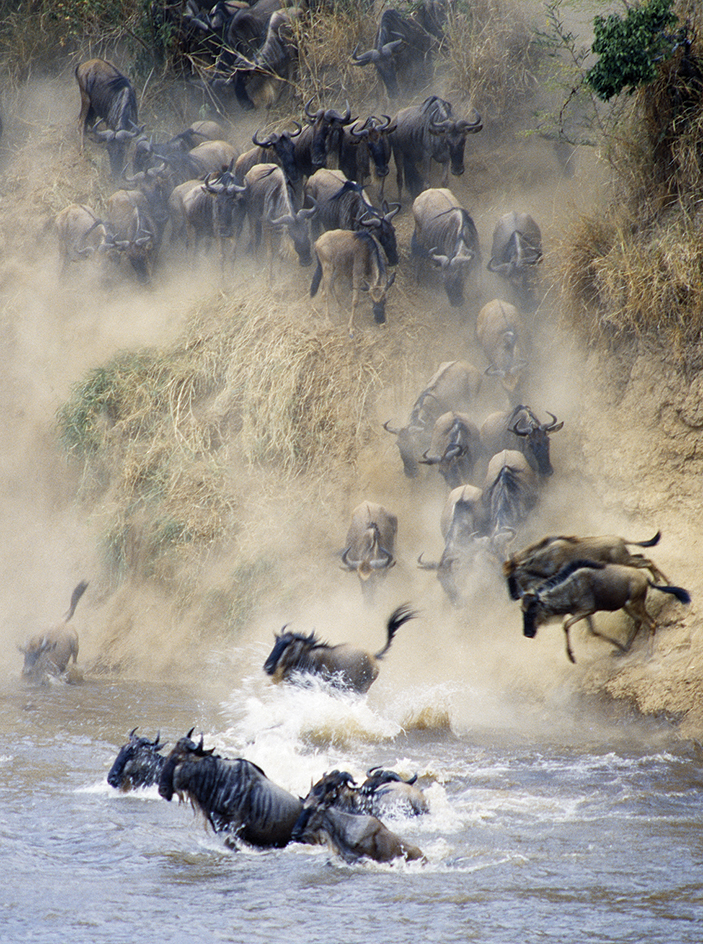
New Zealand
has several national parks. New Zealand’s national park system was made possible by Māori, its native people. Māori feared that Europeans settling in the country in the late 1800’s would not respect their sacred volcanoes. In 1887, a Māori chief gave land to the government for a park. It was the first national park to be created by a gift from native peoples. The area became Tongariro National Park in 1894. The park has grown over time to cover about 300 square miles (775 square kilometers).
Preserving native wildlife has special importance in New Zealand, which has been isolated for about 80 million years. When Europeans began arriving in the 1800’s, more than half of New Zealand’s native plants and animals were unique to the island. But European settlers introduced many species to New Zealand. These introduced species have devastated native plants and animals. New Zealand has made major efforts to preserve its native life.
Fiordland is New Zealand’s largest national park. It covers about 4,800 square miles (12,500 square kilometers) on the South Island. The park is named for its fiords, narrow inlets of the sea between high cliffs. These fiords are up to 27 miles (43 kilometers) long and about 1,600 feet (500 meters) deep. This park also includes evergreen rain forests and Sutherland Falls, which drops 1,904 feet (580 meters). The national parks have helped make tourism and outdoor recreation major industries in New Zealand. 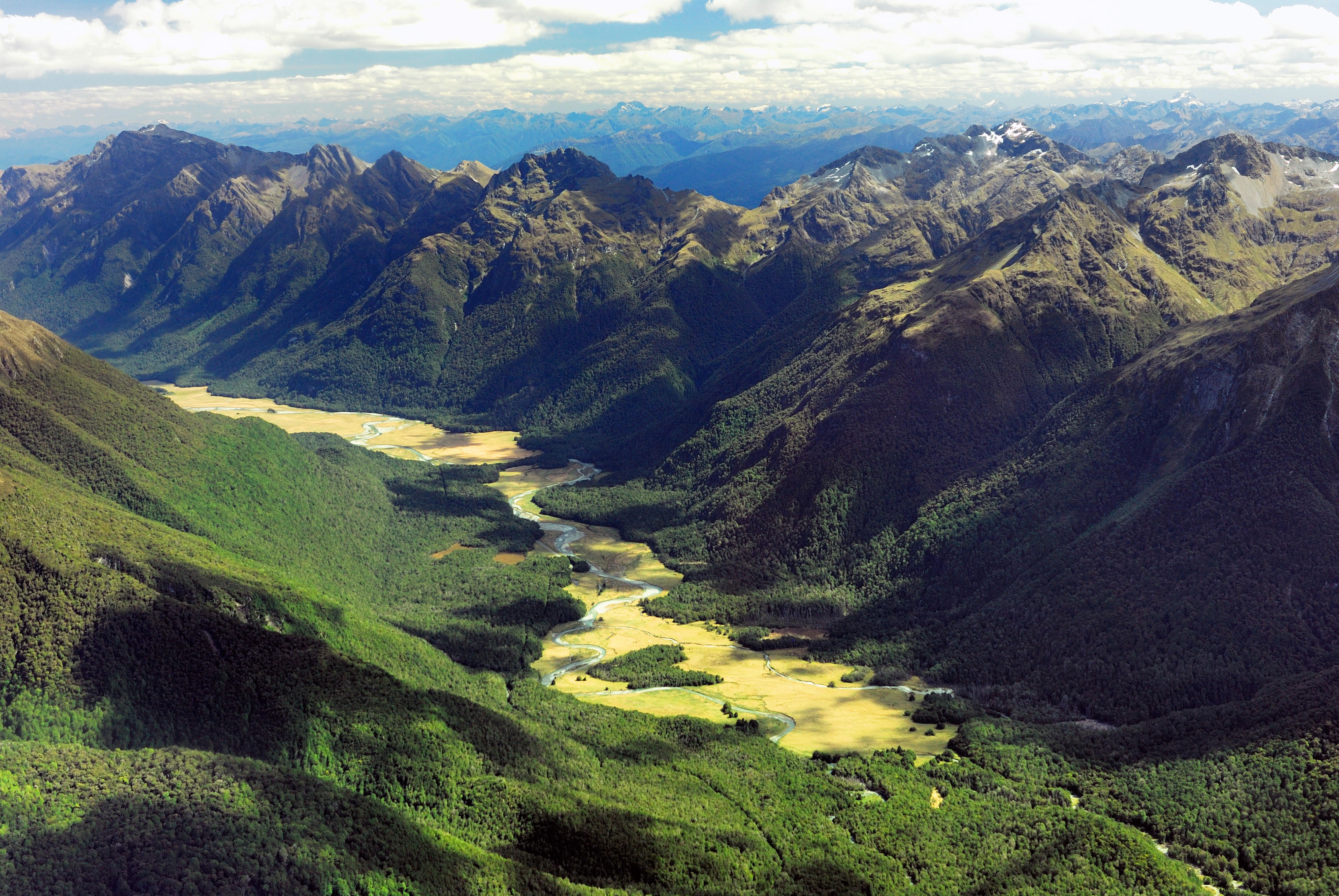
South Africa
has a number of national parks. Nature observers have called South Africa’s animal population “the greatest wildlife show on earth.” Not surprisingly, South Africa’s national park system has focused on wildlife protection.

Kruger National Park began as the Sabi Game Reserve in 1898. In 1926, it became South Africa’s first national park. It has become a world center for wildlife research. Kruger has thousands of buffaloes, elephants, impalas, and zebras, as well as hundreds of species of birds and plants. The park’s grasslands are home to antelopes, cheetahs, giraffes, hyenas, jackals, leopards, and lions. Crocodiles and hippopotamuses live in the rivers. In 2002, Kruger became part of the Great Limpopo Transfrontier Park, an international reserve that also includes parks in Mozambique and Zimbabwe. The establishment of the park is the first step in creating a larger transfrontier reserve that will eventually reach 39,000 square miles (100,000 square kilometers). That area is equivalent in size to Iceland.
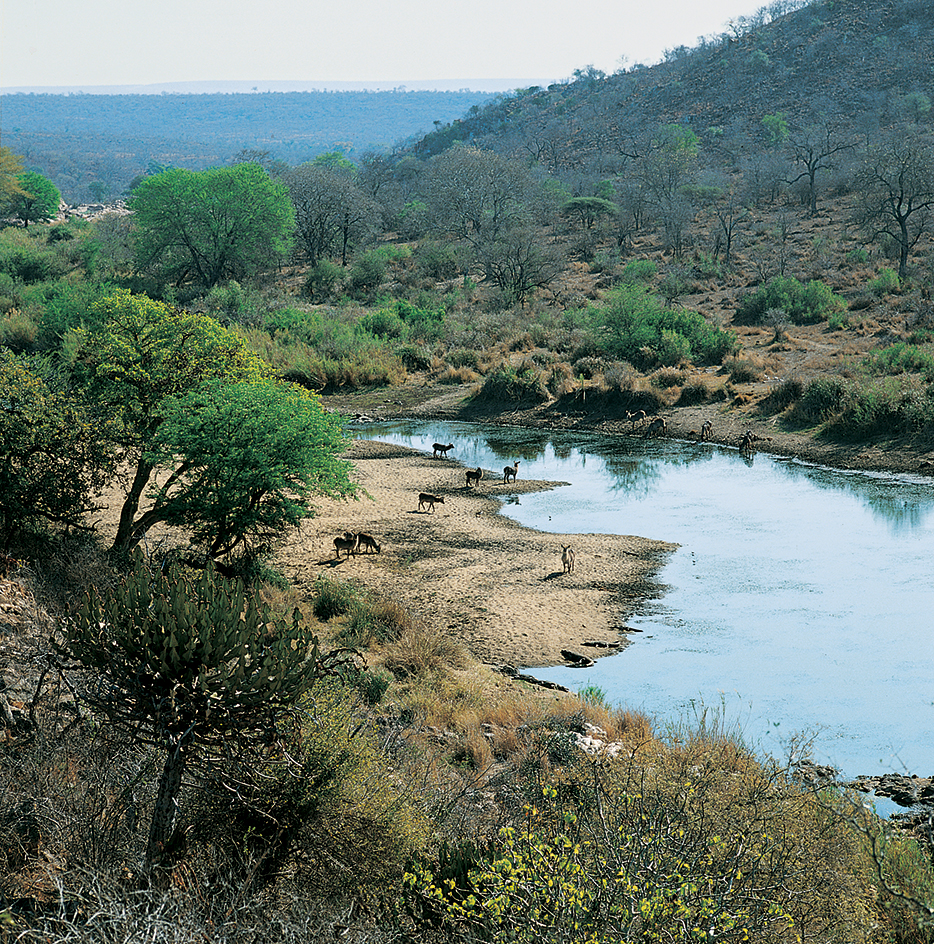
Kalahari Gemsbok National Park was established in South Africa in 1931 to protect herds of migrating animals. In 2000, this park was merged with Gemsbok National Park in Botswana to form the Kgalagadi Transfrontier Park. Kgalagadi covers about 15,000 square miles (38,000 square kilometers) of desert in the two countries. The park is famous for its variety of antelopes, including elands, gemsboks, springboks, steenboks, and wildebeests, as well as for cheetahs, hyenas, jackals, and lions.
The United States
has dozens of national parks and hundreds of other protected areas in its National Park System. The U.S. government’s work in establishing and managing national parks has served as a model for countries around the world. The opening of Yellowstone National Park in 1872 was soon followed by the creation of many other important national parks. For more information on U.S. parks, see National Park System.

Other interesting national parks
Countries throughout the world have established national parks. A number of these parks are famous throughout the world and attract millions of visitors annually. Tourists are often drawn by the variety of wildlife in a country’s national parks. Many people are attracted by the outstanding features of individual parks as well. Some of these parks are considered world treasures. For example, Nepal’s Sagarmatha National Park includes Mount Everest, which rises to 29,032 feet (8,849 meters) and is the highest peak in the world. Guatemala’s Tikal National Park protects pyramids of the ancient Maya civilization.

Another famous protected area, Ecuador’s Galapagos National Park, preserves the natural laboratory that influenced the British biologist Charles Darwin. Darwin’s studies there contributed to his famous theory of evolution. England’s Lake District inspired the British poet William Wordsworth long before it became a national park in the 1950’s. Victoria Falls National Park in Zimbabwe and Mosi-oa-Tunya National Park in Zambia share protection of Africa’s most famous waterfall. This landmark, the magnificent Victoria Falls, drops 355 feet (108 meters).
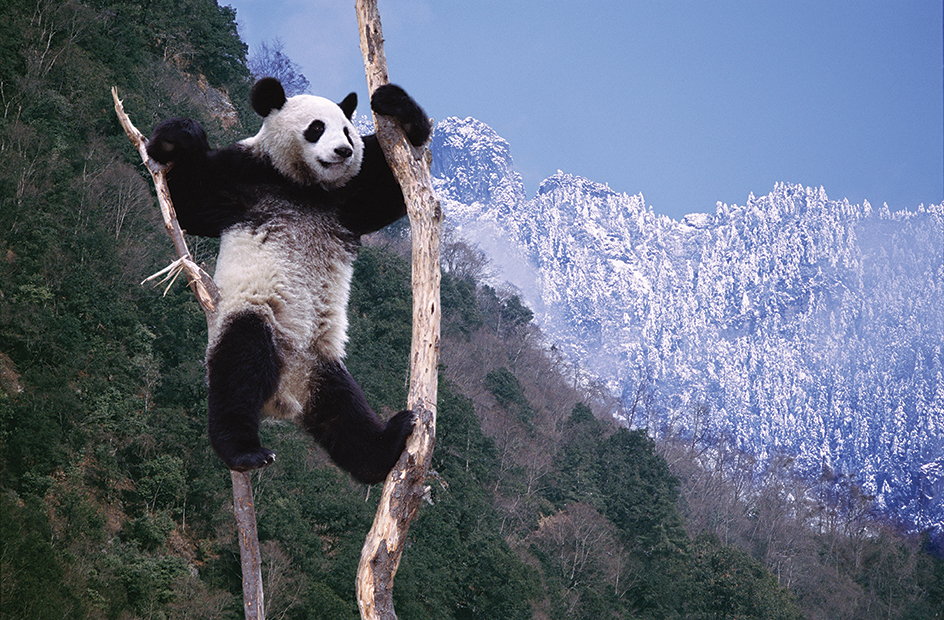
Many of the world’s national parks are vital to wildlife preservation. Wolong National Nature Reserve in China shelters rare giant pandas. Indonesia’s Komodo National Park provides a habitat for the endangered Komodo dragon. India’s national parks, such as Ranthambhore, have helped to save the tiger from extinction. The marshlands of Doñana National Park in Spain provide food and shelter to nearly half the bird species in Europe.
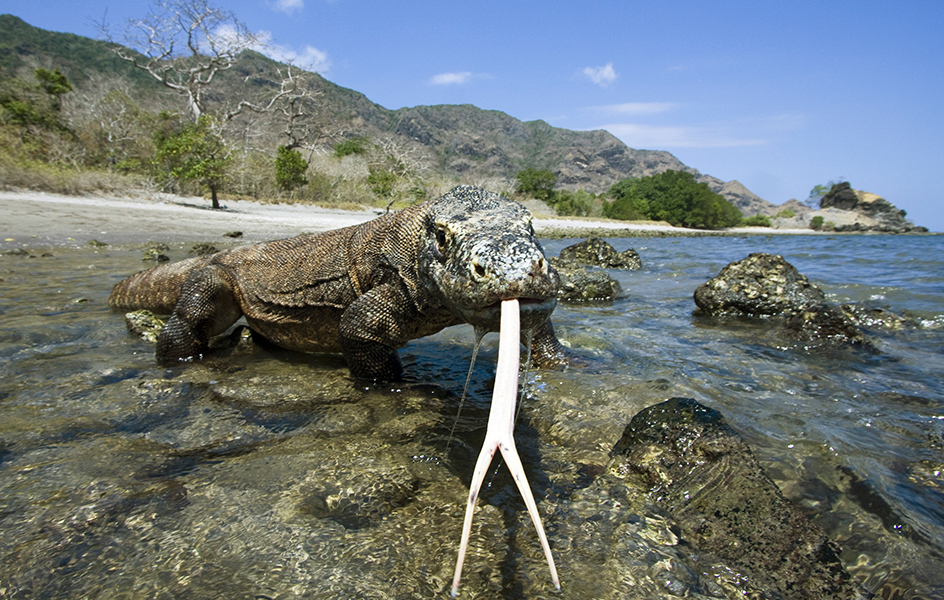
Challenges for the parks
People often think of the world’s national parks as islands of unspoiled nature. We assume these parks are safely separated from a world rapidly becoming more urban, more industrial, and more artificial. The world’s national parks, however, are part of the world in which we all live. What we do affects the parks and may threaten their existence.
Today, national parks face many challenges. Major threats come from pressures to develop park resources, from environmental change, and from overcrowding. Park managers also struggle to guarantee the rights of the land’s original inhabitants and to ensure sound management of fire and wildlife.
Development of park resources.
Many national parks were set aside in the belief that they had little or no commercial value. Later, people discovered that many of the parks contain valuable resources. For example, some parks contain valuable minerals. Also, resources inside parks become increasingly valuable as resources outside the parks are exhausted. Parks contain trees that might be cut, grass that might be grazed, and land that might be farmed. The commercial development of park resources often will produce more jobs and economic growth in the short term than will preservation of the parks.

Pressures to develop park resources are limited in rich nations. People of wealthy nations do not need to use park resources for survival. In developing nations, however, the situation is different. Governments may feel great pressure to sacrifice parks in favor of economic development. Large corporations may acquire the right to use park resources by paying public officials for their cooperation. Many landless peasants seek park resources for survival. They may view the parks as the only lands available for collecting firewood, for building homes, for hunting food, or for raising crops.
Poachers also invade many parks. Many of these illegal hunters kill animals to sell the valuable body parts. For example, poachers slaughter leopards for their skins, elephants for their tusks, and rhinoceroses for their horns. Poachers also collect live animals for illegal sale as pets. Some people also take rare plants from the parks. Where these pressures on park resources are severe, the parks may not survive.
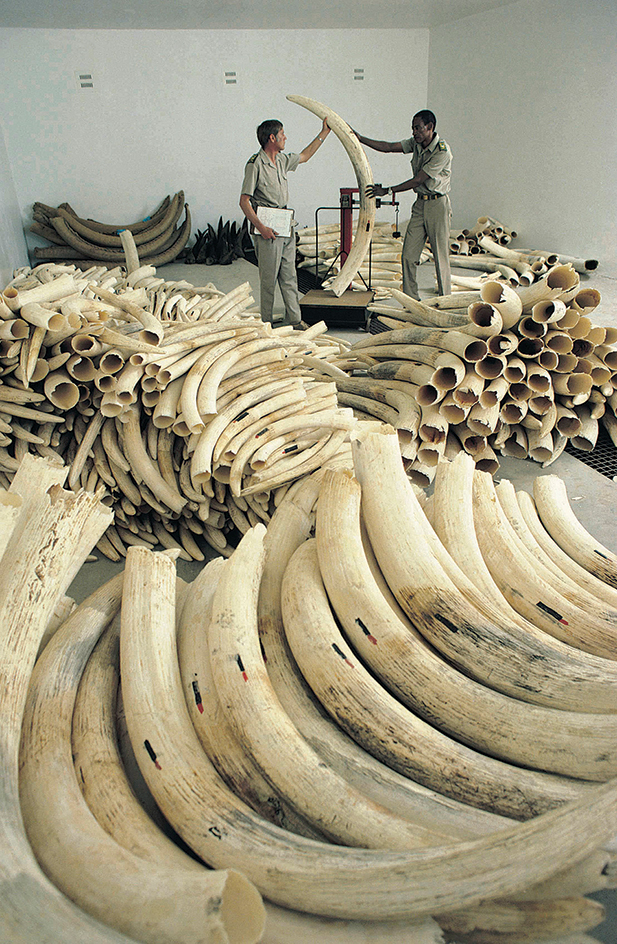
Changes in the environment
also endanger the parks. Various forms of pollution—especially air and water pollution—present major threats because they easily cross park boundaries. For example, the scenic views of Grand Canyon National Park in the United States are often reduced due to air pollution from Los Angeles, which lies about 300 miles (480 kilometers) away. In addition, the park’s environment has suffered from the construction of dams upstream on the Colorado River, which flows through the Grand Canyon. Changes in the flow of water have changed the ecosystem, harming water birds and other wildlife in the park.
Worldwide environmental problems also threaten national parks. These problems include global warming, the increase in Earth’s average surface temperature. Scientists estimate that Earth’s average surface temperature rose by about 1.4 Fahrenheit degrees (0.76 Celsius degrees) from the mid-1800’s to the early 2000’s. Climate scientists believe that this increase was caused mostly by rising levels of carbon dioxide in the atmosphere. Carbon dioxide traps heat from the sun. The amount of carbon dioxide in the atmosphere has risen by about 40 percent since 1750. Most of the increase in carbon dioxide was caused by burning coal, gas, and oil for fuel.
Climate scientists predict that Earth’s average surface temperature will rise an additional 2.0 to 11.5 Fahrenheit degrees (1.1 to 6.4 Celsius degrees) by 2100. Many scientists are concerned that such a large increase in temperature could have a devastating effect on human beings and the environment. They warn that global warming could cause many living things to become extinct.
Overcrowding.
The world’s national parks have experienced dramatic growth in tourism. Some popular parks are actually endangered by their visitors. Too many visitors can harm the natural environments that national parks are set aside to protect. In some popular national parks, for example, visitors’ automobiles create traffic jams, kill wildlife, and pollute the air. In addition, overcrowded campgrounds increase the level of litter and destroy the unspoiled beauty of scenic areas.
Overcrowding creates a difficult choice for park managers. Tourist spending demonstrates that park preservation has economic as well as spiritual value. In fact, in many developing nations, income from tourists who visit national parks is vital to the economy. Nevertheless, managers have had to limit the number of visitors to protect park resources for future generations.
The rights of original inhabitants.
The peoples who live in and near national parks are especially concerned about who benefits from tourism in the parks. In some countries, the benefits have gone to political officials who control the parks and to large foreign-based corporations. The original inhabitants may then see the parks as a foreign idea and one damaging to their lives. As a result, they may oppose the establishment and preservation of national parks.
Some park managers concerned for the rights of local peoples look to Australia and New Zealand for solutions. In those countries, Aboriginal people and Māori support the creation of national parks as a way to preserve their sacred places and traditional ways of life. The cooperative management of Kakadu National Park by Aboriginal groups and the Australian government may serve as a model for other countries.
Management of fire and wildlife.
Fire and wildlife often cause problems for park managers. Both fire and wild animals must behave naturally to preserve a park’s ecosystem. If allowed to burn freely, fire destroys old and diseased trees and shrubs and helps nourish the soil. These conditions promote new growth. Allowing animals to hunt and roam freely helps parks maintain a balanced and varied community of wildlife.
However, fire and wild animals may threaten neighboring crops, livestock, property, and people. Neither fire nor animals recognize park boundaries. As a result, the desire for a natural ecosystem inside the park may conflict with the interests of people who own property outside the park. Park officials may be required to build fences and put out fires to protect private property. But such actions can damage the ecosystem.
In Yellowstone National Park, wolves were killed off in the 1920’s, partly to protect livestock outside the park. Without wolves to feed on elk, the number of elk increased. The park was overgrazed, damaging the ecosystem, and elk often starved to death. In the 1990’s, wolves were brought back to the park. The wolves thrived in the park and helped to restore a more natural balance. However, wolves that move outside the park sometimes attack livestock.
History
Throughout history, people have preserved and protected places they considered special. But it was not until the 1800’s that governments became active in establishing national parks.
The early national parks.
The United States pioneered the development of national parks. Americans became interested in protecting the nation’s wilderness as the country expanded westward during the 1800’s. In 1832, the artist George Catlin became one of the first noted Americans to publicly call for the creation of a national park. In 1858, the writer Henry David Thoreau also promoted the idea. Both Catlin and Thoreau also saw national parks as places where Native Americans could preserve their vanishing cultures. The dream of a great national park became a reality in 1872, when President Ulysses S. Grant signed a law creating Yellowstone National Park.
The national park idea spread to other countries. In 1885, the Canadian government established a park around the hot springs at Banff, Alberta. During the next 40 years, national parks opened in Australia, Germany, Italy, New Zealand, South Africa, Spain, Sweden, and Switzerland. Also during this period, Belgium and France established national parks in their colonial possessions in Africa.

International concern for national parks.
The growth of national parks around the world led to the formation of international conservation organizations. International Union for Conservation of Nature (IUCN) traces its history to 1948. The IUCN is a global federation of government and private conservation organizations. It works to conserve biodiversity and promote the sustainable use of natural resources. In 1960, the IUCN established an organization dedicated to national parks that is now called the World Commission on Protected Areas (WCPA). The WCPA works to encourage the creation and effective management of parks and protected areas around the world.
The First World Conference on National Parks was held in 1962. Since then, world meetings have taken place every 10 years. In 1972, the conference met at Yellowstone National Park in honor of the park’s 100th anniversary. More recent world conferences have been held in Bali, Indonesia; Caracas, Venezuela; and Durban, South Africa.
The United Nations Educational, Scientific and Cultural Organization (UNESCO) established two other important conservation programs. It founded the Man and the Biosphere Programme in 1971 to preserve ecosystems throughout the world for scientific and educational purposes. In 1978, UNESCO released the first World Heritage List, which recognized areas of unique natural or cultural importance. Many national parks around the world have been designated under these programs as biosphere reserves or world heritage sites. This recognition is meant to reward and encourage protection by national governments. 
The national park movement today.
The idea of establishing national parks has proved popular and has spread to most of the world’s countries. Increasingly, park planners work to create parks that will preserve the full range of a nation’s plants, animals, and landscapes. Often, this requires establishing parks in areas of scientific and environmental importance even if those parks might not be particularly popular with tourists.
People are learning that national parks are not natural islands that can be maintained separately from the world around them. The survival of national parks depends on what we do both inside and outside the parks.
